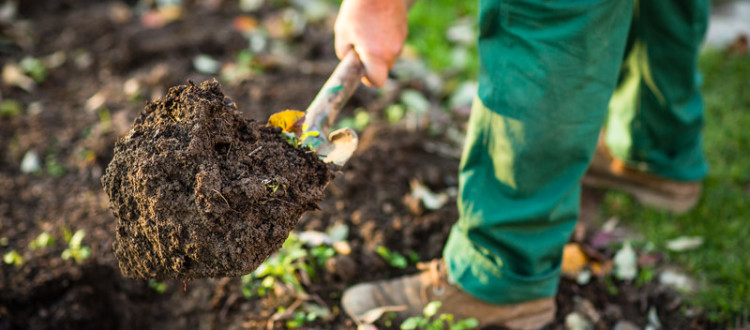Building Soil Fertility and Tilth
If your garden is starting to fade for the season, fall is the perfect time to prepare for the next season’s garden by building your own garden’s soil food web and focusing on the soil. Building and maintaining healthy soil is a continual process. It takes time to build soil that is truly exceptional.
Everything you grow relies on having fertile soil, and if you think the only way to get great dirt is from a bag of potting soil, think again. Enriching and fortifying the soil in your raised beds or garden patch is simple to do, but first it’s important to understand what makes up a patch of good soil.Watch movie online The Transporter Refueled (2015)
Soil Food Web
Topsoil is the top two feet or so of soil that your garden puts roots into. This layer of soil, if it’s healthy, will be literally teaming with a vast array of microorganisms that comprise the “soil food web.” Knowledgeable gardeners know that the secret to a healthy garden is to feed the soil food web various types of nutrients that will help the web to grow.
A healthy soil contains macronutrients such as nitrogen, phosphorus and potassium (known as “NPK” — like fertilizers are labeled), as well as micronutrients such as magnesium and boron. When a plant puts out its root system into this type of rich soil, it’s able to thrive because it has everything it requires for stem formation, (nitrogen) root growth (phosphorus) and to produce blossoms or fruit (potassium). Good quality soil has these elements in a form that is readily available to a plant when it is needed, like having electricity to turn on a light. Adding a balanced, organic slow release fertilizer, and inoculants with beneficial organisms work together to boost soil fertility.
Double Digging
Whether you’ve gardened the same plot for years or are just starting a new bed, the first thing to do is “double dig” the soil. Sink your spade into the ground all the way to the hilt, lift up the shovel and turn the dirt to one side. Then do the same thing in the hole you just created, so that when you remove the second shovel of soil, your hole is two shovel “lengths” deep. Return the upturned soil back to its original hole once you’ve double dug a row.
Double digging brings air to the lowest levels of your garden and loosens the soil enough to allow the longest roots of your garden’s plants to access water and nutrients.
Using a good rototiller is effective at breaking up the first layer, but to effectively double dig your garden requires an extra effort to reach the soil that the tines of the rototiller can’t reach. The good news is: you only need to do this once!
Test Your Soil
This is also an excellent time to have your soil tested by an independent soil lab in your area. This is done to get a clear idea of what your soil has and, maybe most important, what it’s lacking. Once you have this profile, then you can begin adding the missing organic nutrients and amendments to the soil.
Fortify the Soil
Once you understand what your soil has and what it needs, you can begin to add the missing nutrients. Remember, you are feeding a network of microbial activity, so you want to add living material such as compost, worm castings, and a number of other inputs used by successful gardeners everywhere.
What Does “Good Soil” Look Like?
Fertile soil is really an assortment of dead or decaying organic matter like leaves, insects, and roots from plants as well as bacteria, fungi and countless types of microbes. They all have one thing in common: they require air to live. “Heavy” soils such as clay are so dense that they don’t allow much air to penetrate. Sandy soils have lots of air, but cannot “hold” onto nutrients or water; they just pass through.
Good, fertile soil is loose and crumbly, yet when you pick up a handful and give it a good squeeze, it forms a big “clod” that can be crumbled apart again without much effort. Most plots of land chosen to become a garden aren’t fortunate enough to have this kind of soil.
Building Tilth and Fertility — the Organic Way
Adding organic material in the fall allows it to decay over the next six months into the freshly dug soil. The air pockets you created when double digging allows the microbes in your soil to grow, and in the process they enrich your soil further. These microbes break down the nutrients into a form that is readily available to the plant, but it takes time for everything to work.
Winter is an excellent time to let the soil rest and prepare for the next growing season. Mother nature will be hard at work growing out the soil food web while you’re relaxing by the fire and thinking about what you’ll be planting in your spring garden.
For Further Reading:
Here’s an oldie-but-goodie from Mother Earth News, May/June 1985, Preparing the Soil.
Learn more about Building Soil quality at Planet Natural.

